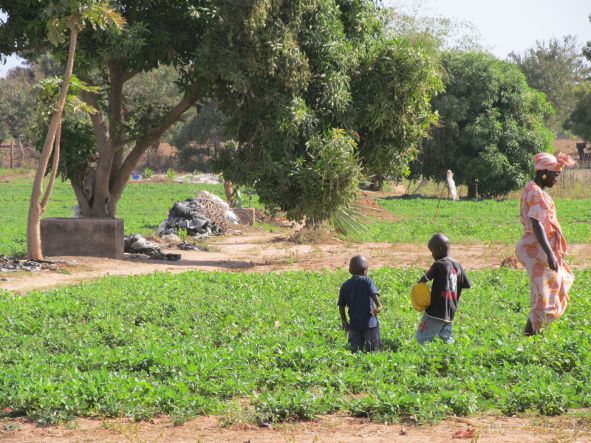In the last 3 weeks I have been conducting fieldwork in The Gambia and Senegal in the framework of the AFRASO project Asian development assistance in Senegambia. My focus is on development cooperation in the agricultural sector. And in the case of The Gambia, the Republic of China (ROC, Taiwan) is one of the most important bilateral donors, particularly after 2005. When then president of Senegal Abdoulaye Wade decided to switch diplomatic recognition from ROC to Mainland China, the Taiwanese technical mission was forced to leave the country and reallocated part of their staff to the "smiling coast".
Some local cultural aspects have become a big headache for the Taiwanese efforts to promote development cooperation as a way to keep on their side one of the few diplomatic allies they still have in Africa. Since British colonial times, one of the problems for agricultural endeavors in The Gambia has been the deeply ingrained gender division of labor in Mandinka culture, the predominant ethnicity, which has also been adopted by other groups, like the Fulani. While men cultivate groundnut, millet, and fruits, rice and horticulture are the exclusive domain of women.
The main elements of the Taiwanese agricultural technical cooperation in The Gambia are rice production (which I will describe in detail in future posts) and "women gardens". Previous research has shown that indeed one of the main problems for the sustainability of the production in the gardens is the lack of men's involvement in any of the tasks. But this seems to be changing:
As can be seen in this video, captured during our visit to the most famous of the gardens (Bajulunding), now there are many men involved in the production. It seems like in recent years the Taiwanese have convinced some men to work there by directly hiring them for a portion of the garden dedicated to the consumption of the embassy staff and for some concrete tasks as operating the machines.
But this is not the only change. In this picture it is possible to see boys working side-by-side with their mothers in the gardens! This is unthinkable in the villages and was in this same garden some years ago.
Maybe is too early to say, but this can be part of an Asian-driven cultural change in The Gambia.






